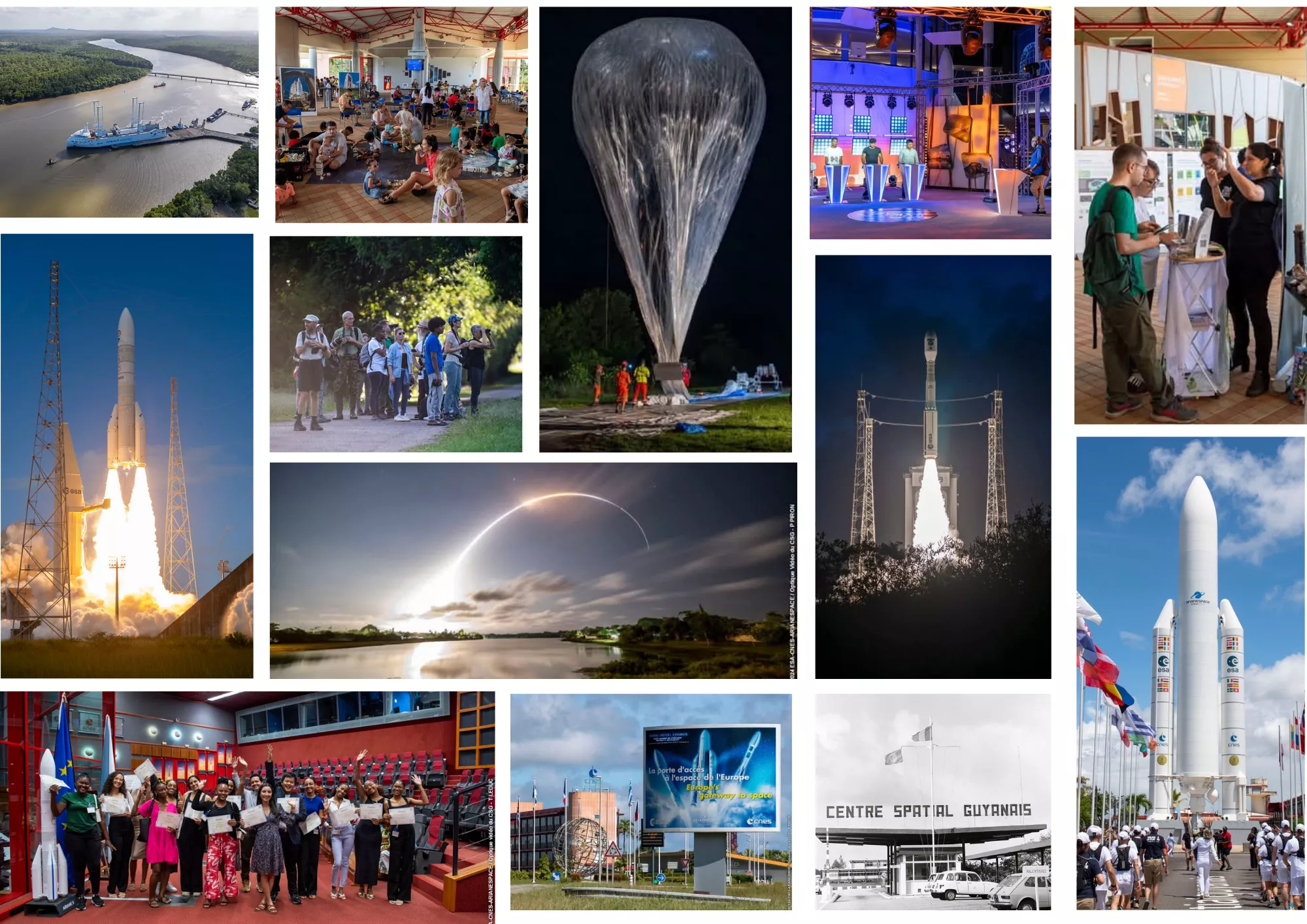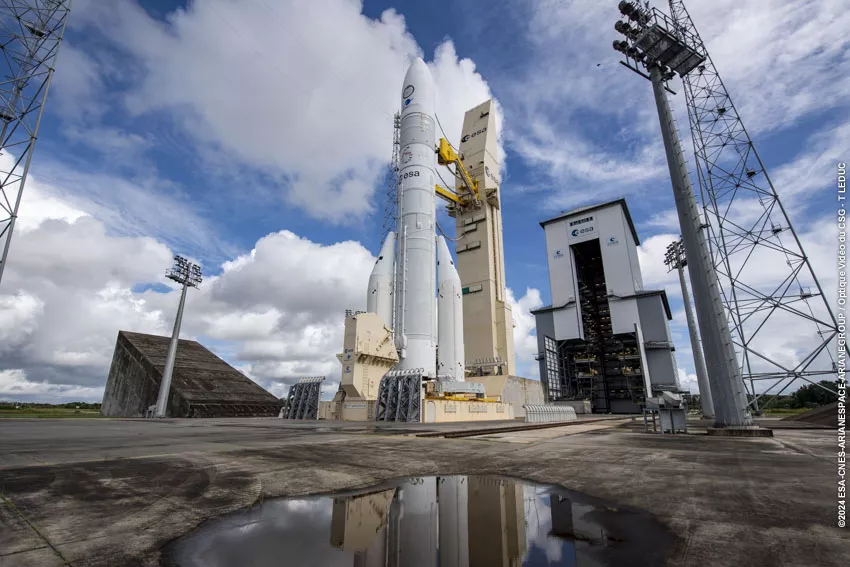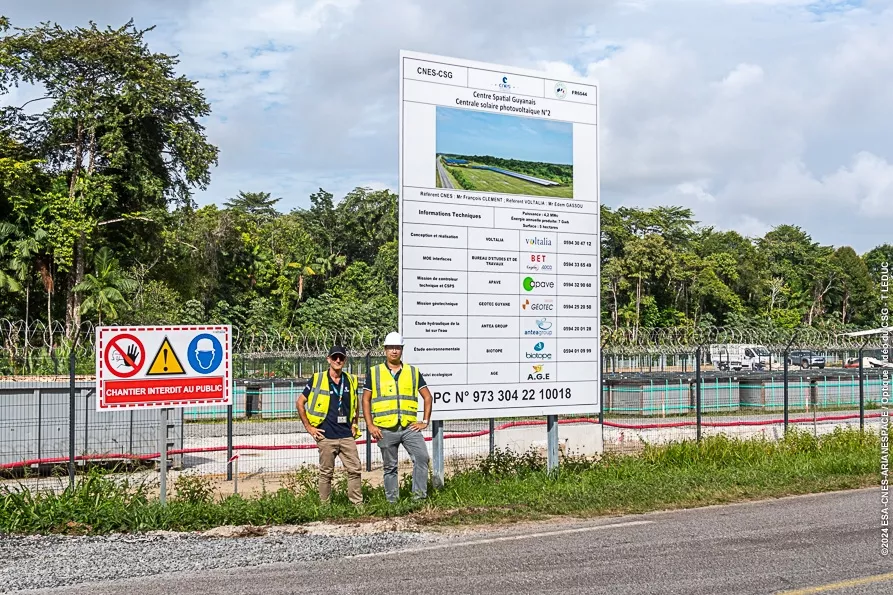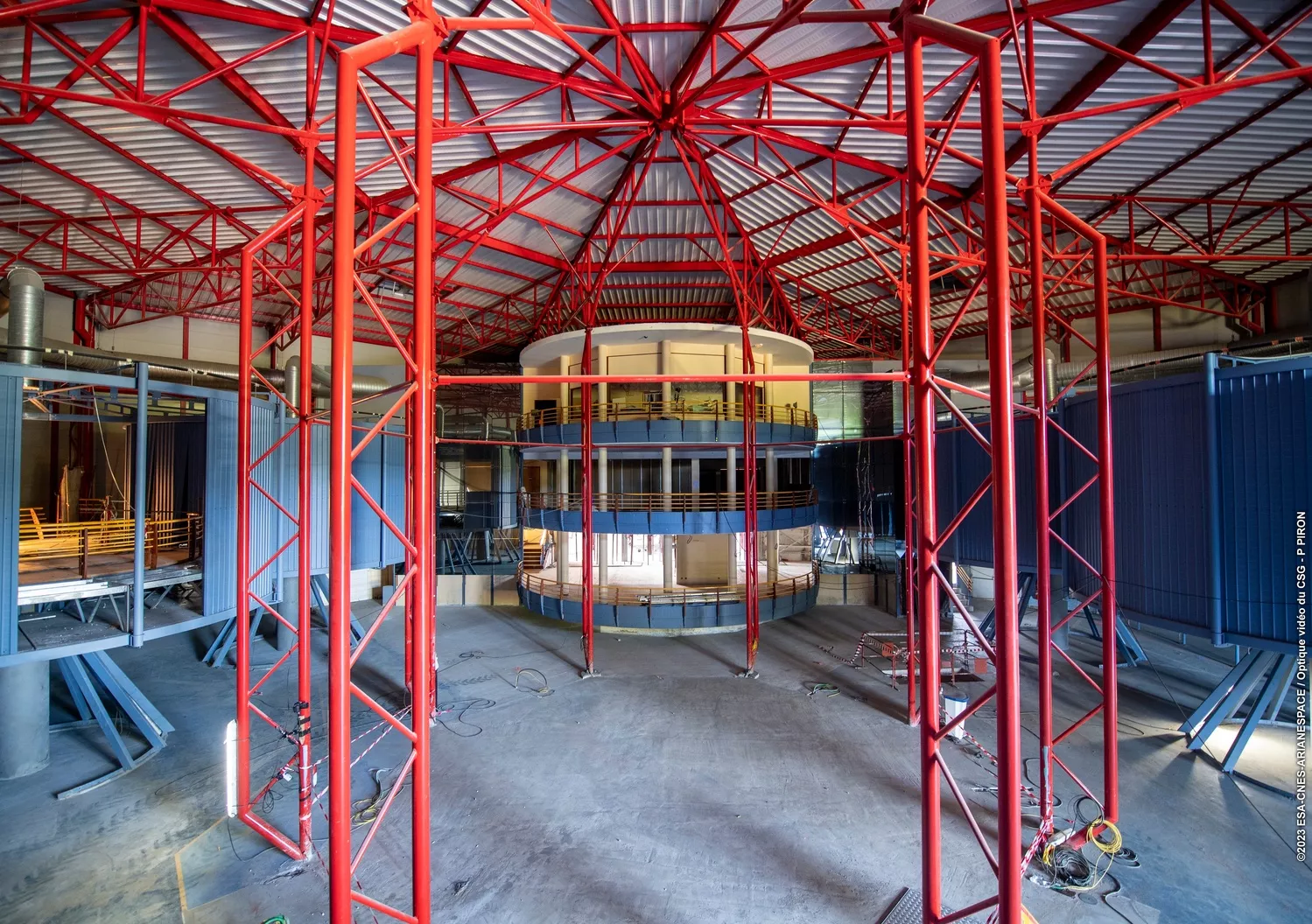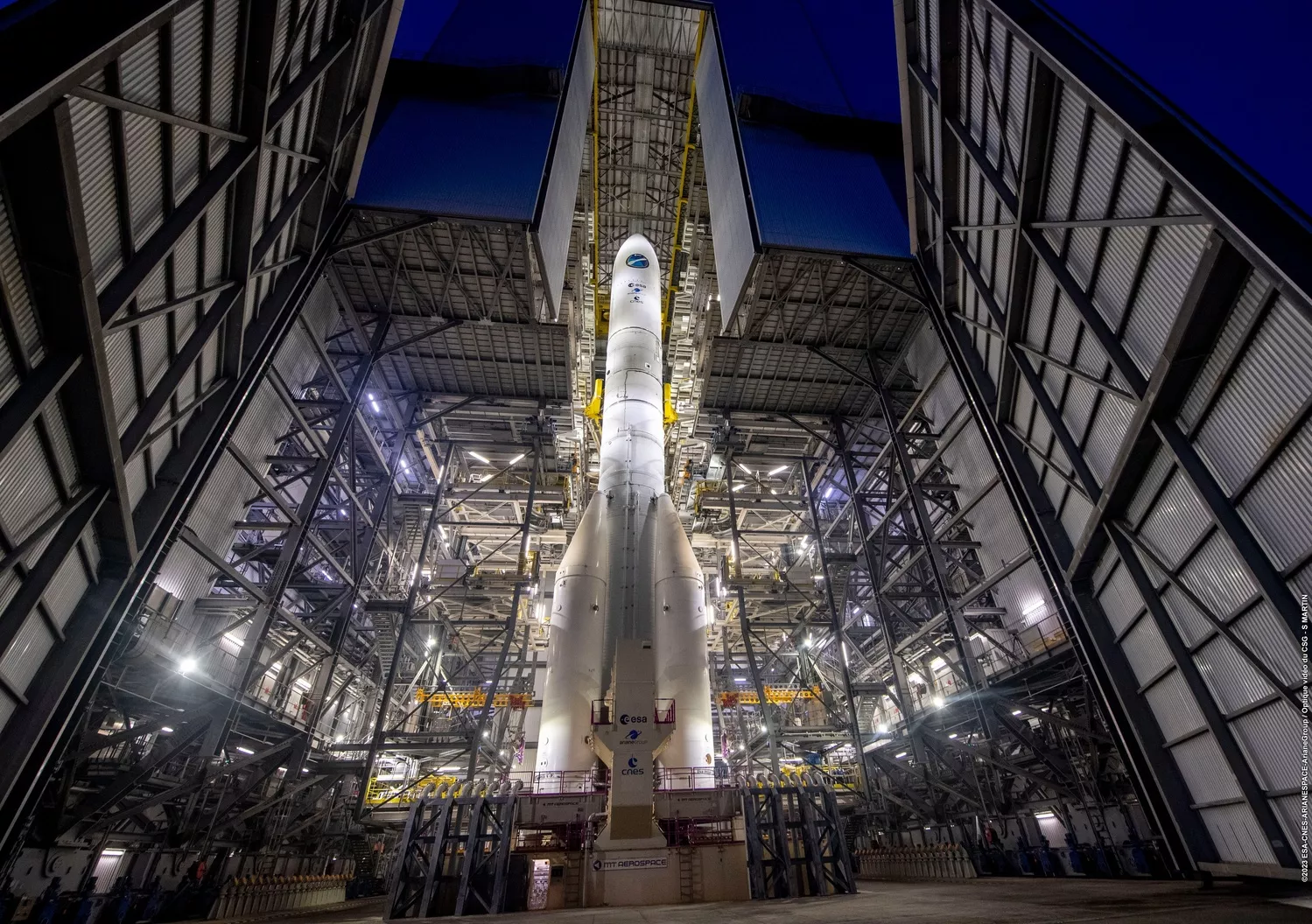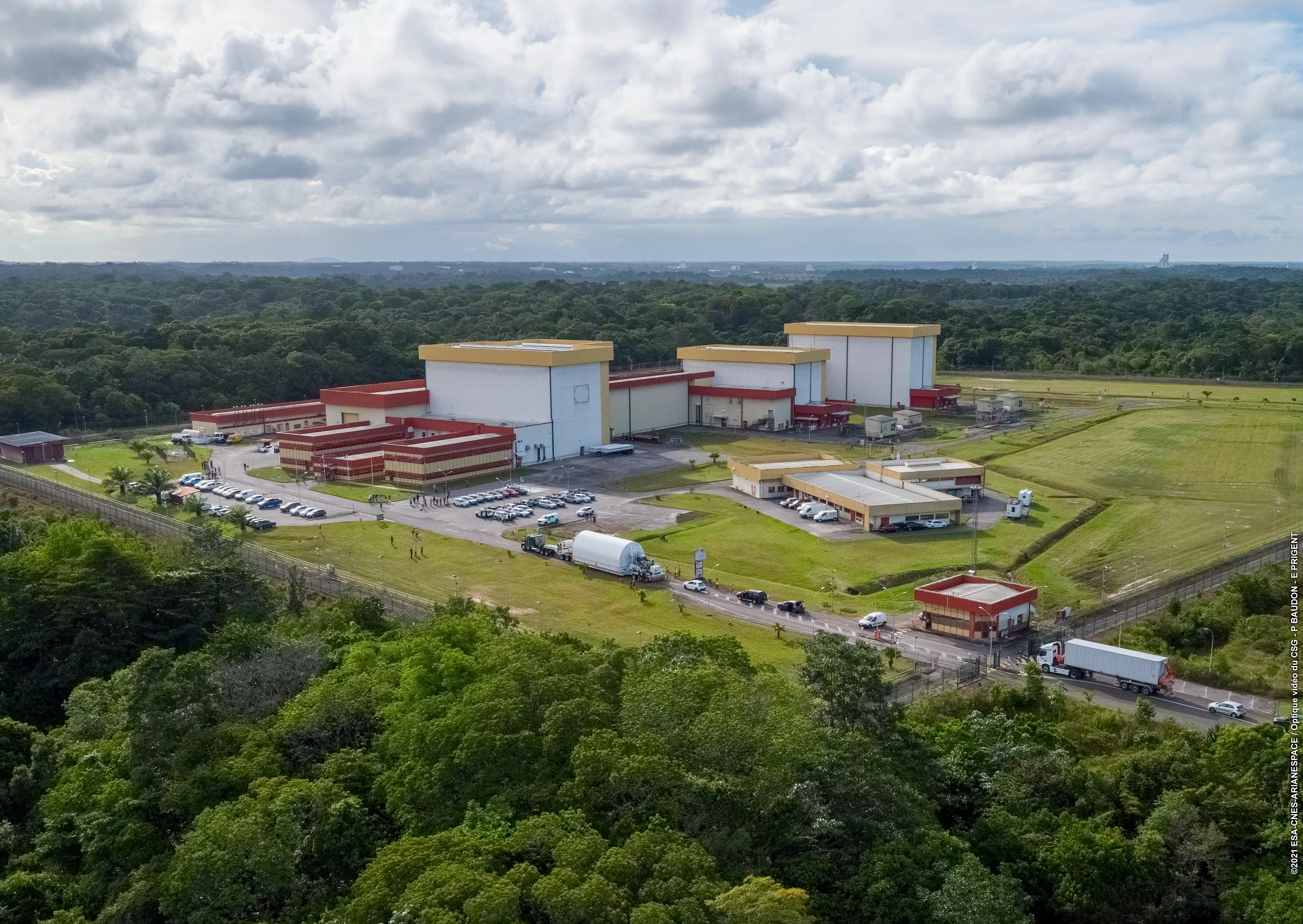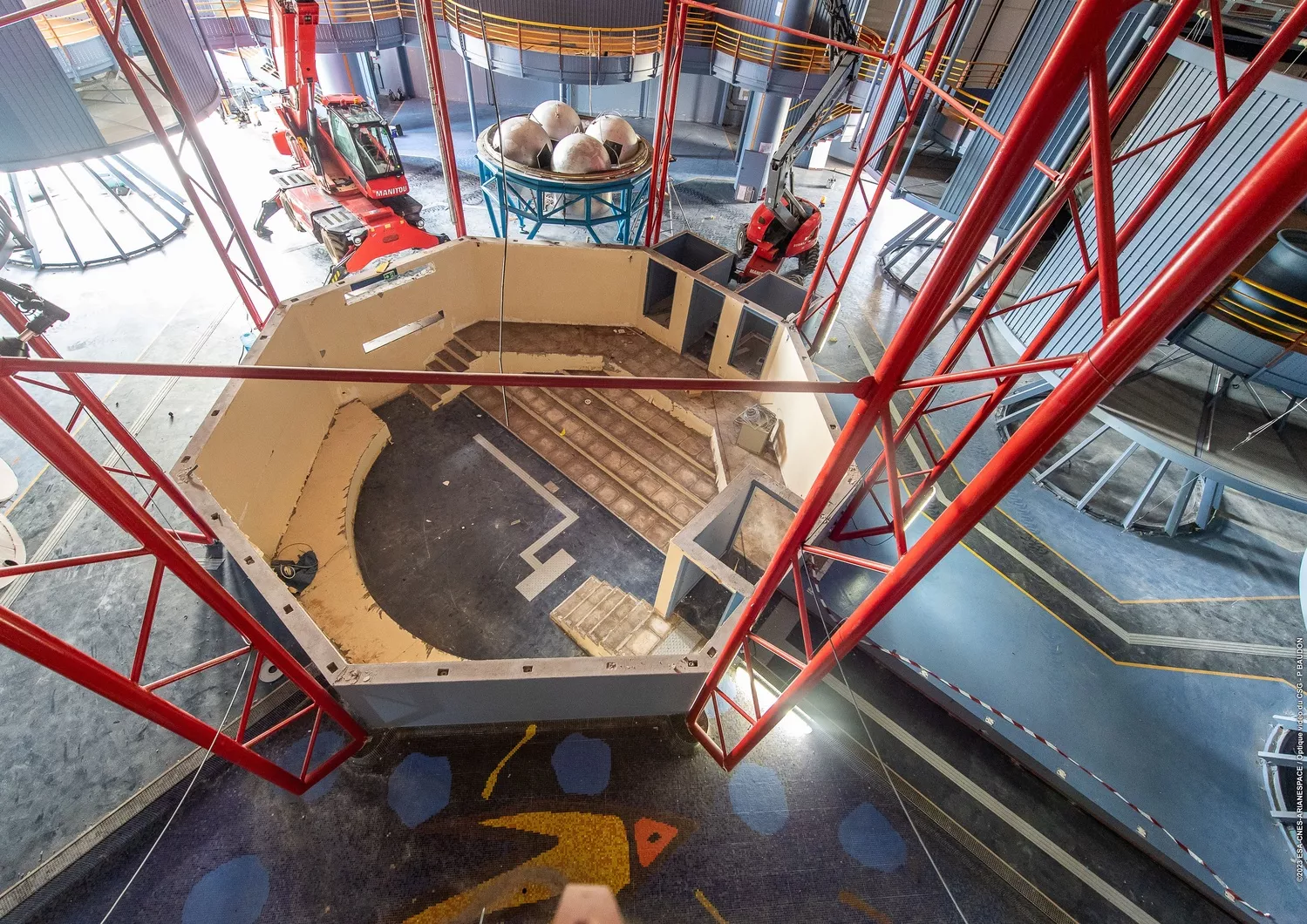At Europe’s spaceport, the energy revolution is in full swing
As the largest consumer of electricity in French Guiana, Europe’s spaceport has been taking proactive measures to measure, limit, and offset its impact on the environment for several years now.
Let's learn more with Sandrine Richard, sustainable development expert at CNES, the French space agency.
What is the French space agency's strategy for reducing energy consumption?
CNES, which has emerged as the space agency for climate, has been committed to the ecological transition for 30 years, not only in its space missions but also in its other activities. We didn't wait for a formal energy-savings plan or for regulatory guidelines before taking action to protect the environment.
We are currently developing an energy-savings plan, which is about to be signed. By 2024, the aim is to achieve 10% energy savings by setting the temperature in buildings to 26 degrees (compared with 19 degrees in mainland France).
Since 2004, CNES at Europe’s spaceport has been ISO 14001-certified for environmental management, a demanding approach that requires everyone's involvement.
Several eco-friendly initiatives and recommendations have been put in place, including LED lights, automatic lighting, sorting waste at source, reducing water and paper consumption, raising awareness of food waste, introducing a fleet of electric vehicles, developing a cycle path between Kourou and the spaceport, raising awareness of shared transport, drawing up a biodiversity management plan, etc.
What energy-saving measures have been put in place?
By 2025, we expect Europe’s spaceport to produce 90% of its energy from renewable sources and we are working to reduce the energy consumption of new buildings by a factor of 3. Since 2016, the law has authorised self-consumption from solar energy.
In 2023, Europe’s spaceport will set up two self-consumption solar farms, each with a peak power of 5 megawatts, located at a distance from each other. Two biomass cogeneration plants will also be installed. They have a twofold aim: to produce low-carbon energy and convert heat into cold. Recovering the cold energy will enable us to air-condition our facilities.
Hyguane (Environmentally Neutral Hydrogen in French Guiana) is a green hydrogen production project. An industrial demonstrator for the production of hydrogen by solar-powered electrolysis will be used for launchers. The aim is also to give a boost to mobility in French Guiana, with vehicles such as buses and lorries powered by hydrogen, and thus develop this sector in the region.

What efforts have you made for air-conditioning the operational buildings?
In French Guiana, given the high humidity level, air conditioning is essential for a comfortable ambient humidity. Air conditioning accounts for 60% of the spaceport's energy consumption. The new buildings at Europe’s spaceport have benefited from new, more efficient construction standards.
Eventually, the management of the air-conditioning network will be centralised, regulated and streamlined, with energy savings of 6% per degree gained. The air-conditioning system in the satellite preparation clean rooms will be replaced by a network based on more innovative technologies that will enable consumption to be controlled as closely as possible.
Titan and Odyssey, what are they?
Odyssey is a positive energy building. Located next to the Ariane 5 launch centre, it is in the middle of a savannah, a natural area of great ecological value. It meets the Qualité Environnementale Amazonienne (AEQ) criteria, with wide roof overhangs, innovative windows and sunshades, a planted patio, etc.
188 solar power panels have been installed over an area of 306 m2, generating 73 MWh of electricity per year. This production covers 100% of the building's current consumption of 15 kW. The production margin is used to charge electric vehicles. Finally, the building is constructed on stilts, which means it has less impact on the earthworks.
Titan is a pioneering, high-quality building, with many advantages in terms of materials and energy. Its entire framework is made of local wood. It has a 300-litre solar water heater, rainwater harvesting systems and solar power panels spanning 235 m2. Titan will serve as a showcase and model for the refurbishment and modernisation of Europe’s spaceport.

In the same section
-
The French Space Agency’s commitments in French Guiana : review and outlook
29/01/2025Europe’s Spaceport: Recap of 2024 and outlook for 2025
28/01/2025Welcome to the new website of Europe's Spaceport
22/01/2025Energy transition at Europe’s spaceport
08/04/2024[Space Museum] update on the progress of the works
29/01/20242024 at Europe’s spaceport
15/01/2024Europe’s spaceport gets a new facility for satellites
06/12/2023[Space Museum] Progress report
25/09/2023EPCU S5 under construction
05/09/2023
